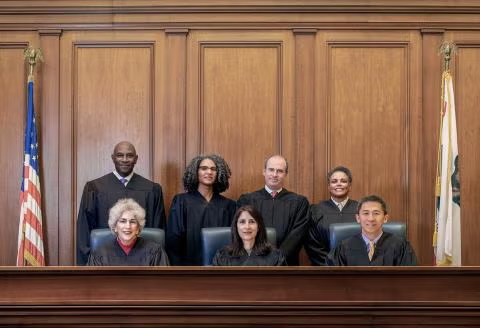Governor Newsom Expands COVID-19 Leave Entitlements for Many California Workers
On September 9, 2020, Governor Newsom signed AB 1867 into law, which, in part, supplements the federal Families First Coronavirus Response Act (“FFCRA”) enacted earlier this year. (For background on the FFCRA, see our previous blog posts here, here, and here). Specifically, AB 1867 creates Supplemental Paid Sick Leave (“SPSL”) rights for millions of California employees who may be impacted by COVID-19, but who are not covered by the FFRCA. AB 1867 also codified an earlier executive order signed by Governor Newsom that created SPSL rights for a broad range of food sector workers.
Expanded Supplemental Paid Sick Leave
Covered Employers: AB 1867 applies to all employers with 500 or more employees. It also applies to employers with less than 500 employees if they: (1) employ healthcare providers and/or emergency responders, and (2) chose to exclude such employees from the leave provisions of the FFCRA.
Covered Employees: The new law has very broad coverage for employees – any employee that works for a covered employer and leaves their home to perform work for such employer is covered.
Bases for SPSL: Covered employers must provide SPSL to any covered employee who is unable to work because the employee:
-Is subject to a federal, state, or local COVID-19 quarantine or isolation order; or
-Is advised by a healthcare provider to self-quarantine or self-isolate due to concerns related to COVID-19; or
-Is prohibited from working by the employer due to health concerns related to potential transmission of COVID-19.
Notably, covered employees are not entitled to take SPSL in order to care for someone else who is quarantined and/or for a child whose school (or place of care) is closed, both of which are covered under the FFCRA.
Amount of Leave: The amount of leave an employee is entitled to take under the new law correlates to the number of hours the employee works (or is scheduled to work in some cases). For instance, an employee is entitled to 80 hours of leave, which is the maximum amount provided by AB 1867 for most employees, if: (1) the employee is considered full-time by the employer; or (2) the employee is not full-time, but worked (or was scheduled to work) an average of at least 40 hours per week during the two weeks immediately before the employee took leave.
A part-time employee with a regular weekly schedule is entitled to take an amount of SPSL equal to the number of hours the employee is normally scheduled to work over a two-week period. An employee whose hours vary is entitled to SPSL in an amount equal to 14 times the average number of hours worked per day during the prior six months of employment.
Rate of Pay: Employees are paid for SPSL hours at the regular rate of pay they received during their last pay period, but SPSL compensation is capped at $511 per day and $5,110 total for all SPSL taken per employee.
Interplay with Other Leave: Employers must provide SPSL in addition to any other paid sick leave that employees are entitled to under California law. However, employers who already provide a benefit comparable to SPSL (i.e., sick leave for COVID-related reasons that is paid at a comparable or higher rate) can count such hours towards the hours of SPSL they are required to provide. Similarly, leave already provided to a food sector worker pursuant to the Governor’s executive order counts towards any SPSL that worker would be entitled to take under the new law. Note that employers cannot require employees to use any other leave (whether paid or unpaid) before they may use SPSL.
Effective Dates: For food sector workers who were covered by the Governor’s earlier executive order, the law is retroactive to April 2020 and extends through December 31, 2020. For all other covered employees, the law is effective between September 19, 2020 through December 31, 2020. The paid leave entitlements in the FFCRA are also effective through December 31, 2020. AB 1867 specifies that, if the Emergency Paid Sick Leave provided by the FFCRA is extended, SPSL with be extended for the same amount of time.
Penalty for Violation: Employers who do not comply with the new law are subject to paying a penalty of three times the dollar amount withheld or $250, whichever is greater, for each day sick leave is not provided. However, there is a $4,000 cap on total penalties per employee.
Next Steps for Employers (Act Now!)
-Update Your Policies
Covered employers should immediately (a) examine their paid sick leave policies to determine whether the leave they currently provide satisfies the requirements of the statute and (b) update policies that do not already provide sufficient leave.
-Check Your Paystubs
Under the new law, covered employers must inform employees (except food sector workers) how much SPSL they have available to use by either (a) including that information in employees’ paystubs/wage statements or (b) providing it in writing some other way on pay days. Employers are already required inform employees of sick time they have available under California’s paid sick leave law – this new requirement is in addition to that obligation.
-Provide Notice of SPSL Rights
Covered employers are required to either post or electronically distribute notices created by the California Labor Commissioner. The notice for covered employers in the Food Sector is here, and the notice for other covered employers is here.
Insights
OUR BLOG


